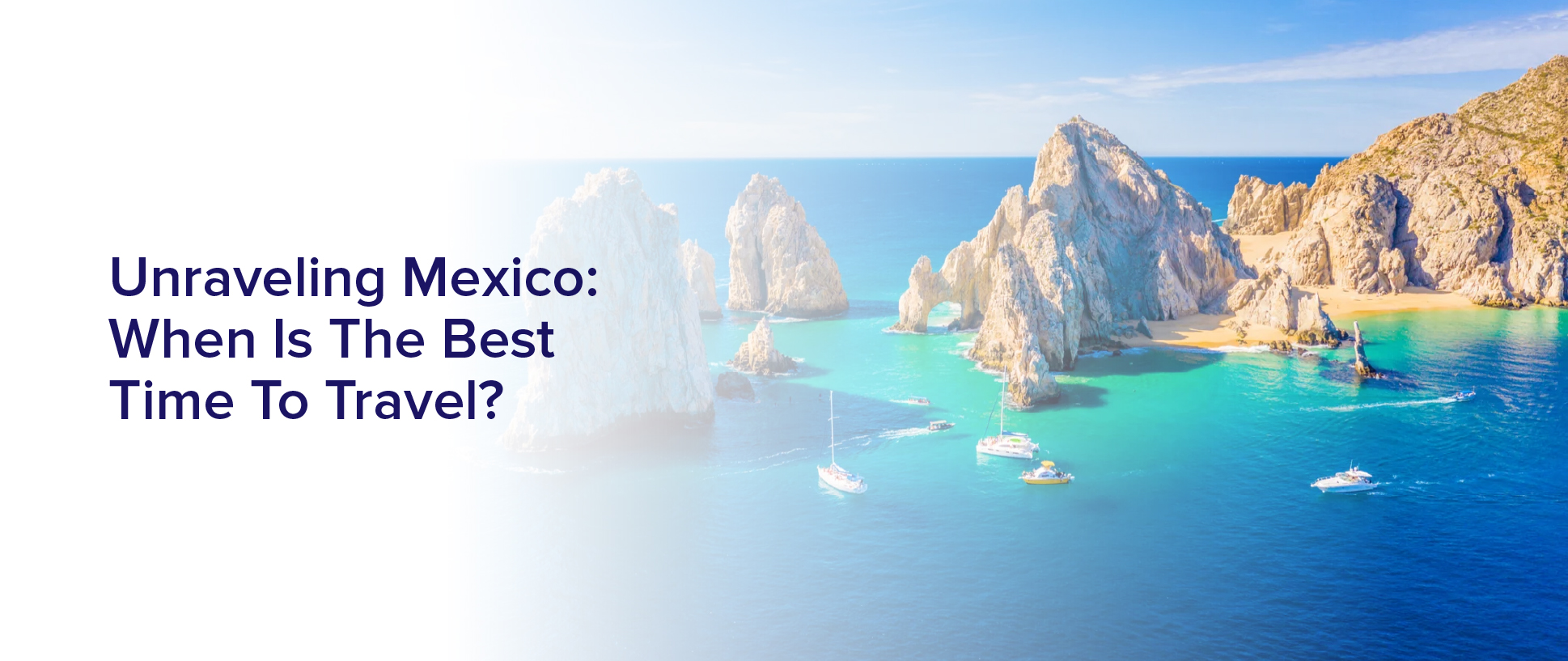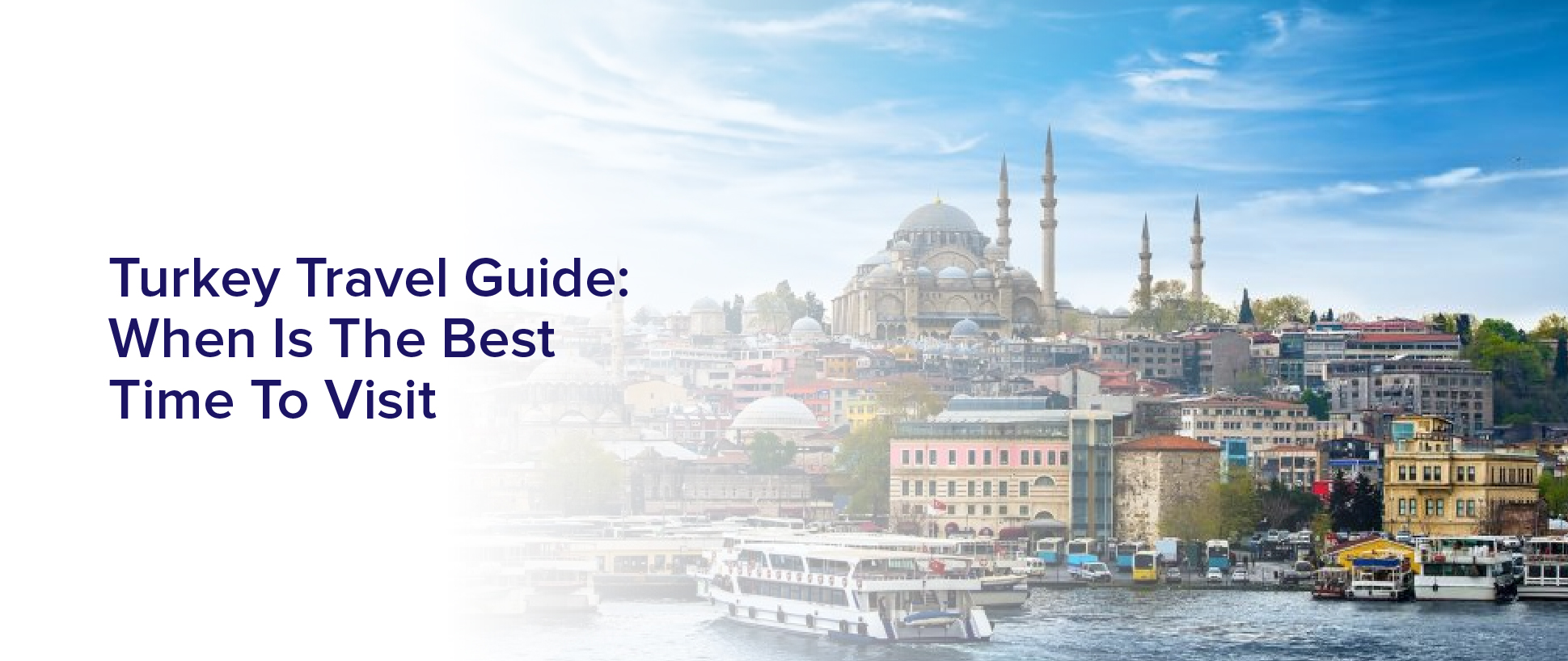Are you planning a trip to Mexico but unsure of when to go? With its diverse climate and geography, Mexico offers a variety of travel experiences throughout the year. From the tropical beaches of the Yucatan Peninsula to the arid deserts of Baja California, Mexico’s regional climate variations can make it difficult to determine the best time to visit.
Altitude also plays a significant role in Mexico’s weather patterns. As you climb in elevation, temperatures drop and precipitation levels increase. This means that the same time of year can have vastly different weather conditions in different parts of the country.
Additionally, Mexico’s rainy season and hurricane season can impact travel plans, making it important to plan accordingly. In this article, we’ll unravel the complexities of Mexico’s climate and help you determine the best time to travel.
Mexico’s Regional Climate Variations
If you’re planning a trip to Mexico, it’s important to keep in mind that the country’s regional climate variations can greatly affect your experience, so it’s best to pack for all possibilities!
Mexico has a diverse range of climates, from the tropical climate of the Yucatan Peninsula to the desert climate of the Northern states. The Pacific coast and the Gulf of Mexico have a similar climate, which is typically hot and humid. However, the Yucatan Peninsula has a different climate, with high temperatures and humidity, and a rainy season that lasts from May to October.
The best time to visit Mexico depends on where you want to go and what you want to do. If you’re planning a beach vacation, the best time to visit is during the dry season, which is from November to April. However, if you’re planning a trip to Mexico City or other inland areas, the best time to visit is during the winter months, when the weather is cooler and drier.
No matter when you visit, make sure to pack sunscreen, hats, and light, breathable clothing to stay comfortable in Mexico’s varying climates.
The Effects of Altitude on Temperature
The temperature significantly drops with altitude, so it’s important to be prepared for cooler weather when traveling to higher elevations. In Mexico, areas like Mexico City, Puebla, and Guadalajara are located at high altitudes and experience cooler temperatures than coastal regions. The higher you go, the colder it gets, so make sure to bring layers and warm clothing if you plan to visit these areas.
At high altitudes, the air is thinner and can make it harder to breathe, especially for those who aren’t used to it. It’s important to acclimate slowly and drink plenty of water to avoid altitude sickness.
Additionally, the sun can be stronger at higher elevations, so don’t forget to pack sunscreen and a hat to protect your skin.
Altitude can have a significant effect on temperature, but with proper preparation, you can enjoy the stunning views and unique experiences that come with traveling to high-altitude destinations in Mexico.
The Rainy Season and Hurricanes
Beware of the rainy season and hurricanes in Mexico, as they can drastically affect your travel plans and safety.
The rainy season in Mexico typically lasts from May to October, with the peak of the season occurring in September. During this time, you can expect heavy rainfall, strong winds, and potential flooding in certain areas. It’s important to check weather forecasts and plan your activities accordingly, as some popular tourist destinations may be inaccessible or closed due to weather conditions.
In addition to the rainy season, hurricanes can also pose a threat to travelers in Mexico. Hurricane season in Mexico runs from June to November, and the country can experience several storms throughout the season.
If you’re planning to travel during hurricane season, it’s important to stay informed about any potential storms and to have a plan in case of an emergency. Be sure to check with your travel provider about their policies and procedures for dealing with hurricane-related issues, such as flight cancellations or hotel evacuations.
By staying aware and prepared, you can still enjoy your travels in Mexico during the rainy season and hurricane season.
Peak Tourist Seasons
Interestingly enough, peak tourist seasons in Mexico coincide with major holidays and events throughout the year. If you’re looking to experience the vibrant culture and festivities of Mexico, then the best time to visit would be during these peak seasons.
For instance, the Christmas and New Year period is one of the most popular times to visit Mexico, especially for those who want to witness the colorful and lively celebrations of the holiday season.
Another popular peak season in Mexico is during the spring break period in March and April. This is when many college students from the United States flock to popular beach destinations like Cancun, Puerto Vallarta, and Cabo San Lucas.
If you’re not a fan of crowded beaches and party scenes, then it’s best to avoid these destinations during this time. However, if you’re looking to join in on the fun and excitement, then this is the perfect time to visit Mexico.
Off-Season Travel Benefits
Don’t miss out on the amazing deals and peaceful serenity of traveling during the off-season in Mexico, where you can experience the beauty and charm of the country without the overwhelming crowds.
With fewer tourists around, you’ll have a more relaxed and authentic experience as you explore the vibrant cities, gorgeous beaches, and stunning natural landscapes that Mexico has to offer.
One of the biggest advantages of traveling during the off-season is the lower prices. You can save a significant amount of money on flights, accommodations, activities, and even food and drinks. Plus, you’ll often find special promotions and packages that make your trip even more affordable.
Additionally, you’ll have a better chance of snagging the best deals on popular attractions and tours, as there will be less competition for tickets and reservations. So, if you’re looking to make the most of your budget and enjoy a peaceful getaway, consider visiting Mexico during the off-season.
Cultural and Festive Events
You’ll love immersing yourself in the vibrant culture of Mexico by attending some of the country’s many festive events. From the Day of the Dead celebrations to the colorful parades during Carnival, there’s always something exciting happening in Mexico. These events not only provide entertainment, but also give you an opportunity to learn about Mexican traditions and customs.
One of the most popular events in Mexico is the Day of the Dead, which takes place in late October and early November. During this time, people gather to remember and honor their loved ones who’ve passed away. The celebrations include colorful altars, parades, and offerings of food and drink.
Another popular event is Carnival, which takes place in February or March. This lively festival is celebrated with colorful costumes, music, and dance. Attending these events will give you a unique and unforgettable experience of Mexican culture.
Planning Your Perfect Trip to Mexico
Ready to plan your perfect trip to Mexico? Let’s dive into some tips and tricks for making the most out of your vacation!
First and foremost, do your research on the areas you want to visit. Mexico is a large country with diverse regions and attractions, so it’s important to narrow down your options and prioritize what you want to see and do.
Next, consider the time of year you’ll be visiting. While Mexico is a great destination year-round, certain times of the year may be better suited for your interests. For example, if you’re looking for warm beach weather, the summer months of June through August are ideal. On the other hand, if you’re interested in cultural events and festivals, the fall and winter months have plenty to offer. Keep in mind that certain regions may have their own unique weather patterns and seasons, so be sure to research accordingly.
With a bit of planning and some insider tips, you’re sure to have an unforgettable trip to Mexico.
Frequently Asked Questions
What are some common safety concerns for travelers in Mexico?
When it comes to traveling to Mexico, there are some common safety concerns that you should be aware of. One of the biggest concerns is the issue of drug-related violence, particularly in certain areas of the country.
It’s important to stay up-to-date on the latest news and travel advisories from your government, and to avoid any areas that are known to be dangerous.
Petty crime is also a concern in some tourist areas, so it’s important to keep an eye on your belongings and be aware of your surroundings at all times.
Taking basic precautions and using common sense can go a long way towards ensuring a safe and enjoyable trip to Mexico.
What are some authentic and lesser-known experiences to have in Mexico?
If you’re looking for authentic and lesser-known experiences in Mexico, there are plenty of options to choose from.
For example, you can explore the colorful and vibrant street art in Mexico City’s neighborhoods like Roma and Condesa.
Or, head to the state of Oaxaca to learn about traditional crafts like weaving and pottery.
You can also visit the town of Tequila, located in the state of Jalisco, to learn about the tequila-making process and sample some of the best tequilas in the world.
Another unique experience is visiting the Monarch Butterfly Biosphere Reserve in Michoacán, where you can witness millions of monarch butterflies during their annual migration.
There are endless opportunities to discover the authentic and lesser-known side of Mexico beyond the typical tourist attractions.
How do language barriers affect travel in Mexico?
When traveling to Mexico, language barriers can affect your overall experience. If you don’t speak Spanish, it can be challenging to communicate with locals and navigate your way around the country.
However, many tourist areas have English-speaking locals, and you can also use translation apps or hire a guide to help bridge the language gap. It’s also helpful to learn basic Spanish phrases and etiquette before your trip to show respect and build connections with locals.
Don’t let the language barrier deter you from exploring all that Mexico has to offer. With some preparation and an open mind, you can still have a fantastic trip.
Are there any cultural etiquette tips that travelers should be aware of?
When traveling to Mexico, it’s important to be aware of cultural etiquette tips to ensure a positive experience.
First and foremost, greet people with a friendly ‘Hola’ and use formal titles such as ‘Señor’ or ‘Señora’ when addressing elders or those in positions of authority.
It’s also considered rude to refuse food or drink when offered, so be prepared to indulge in the local cuisine. Additionally, it’s customary to tip service workers such as waiters and hotel staff, typically around 10-15% of the total bill.
Finally, dress conservatively when visiting religious sites and be respectful of local customs and traditions.
By following these cultural etiquette tips, you can show respect for the local culture and enhance your travel experience in Mexico.
What is the process for obtaining a visa to travel to Mexico?
If you’re planning a trip to Mexico, you may need a visa depending on your nationality.
The process for obtaining a visa involves submitting an application, providing documentation such as a passport and proof of financial means, and paying a fee.
It’s recommended to apply for a visa at least a few weeks in advance of your planned travel dates.
The specific requirements and application process may vary depending on the country you’re applying from, so it’s important to research the process for your specific situation.
Conclusion
So, when’s the best time to travel to Mexico? It depends. It depends on the region you want to visit, the activities you want to do, and your personal preferences.
Mexico has a diverse climate with regional variations. The best time to visit one region may not be the same as the best time to visit another. Altitude also affects temperature, so if you plan to visit high-altitude destinations like Mexico City or San Cristobal de las Casas, you may need to consider the cooler temperatures.
The rainy season and hurricane season are also important factors to consider, especially if you plan to visit coastal areas.
Peak tourist seasons are popular for a reason, but off-season travel has its own benefits. You can enjoy lower prices, fewer crowds, and a more authentic experience of local life.
Cultural and festive events also add a unique flavor to your trip, so it’s worth checking the calendar and planning ahead.
Whatever your preference, Mexico has something to offer all year round.



